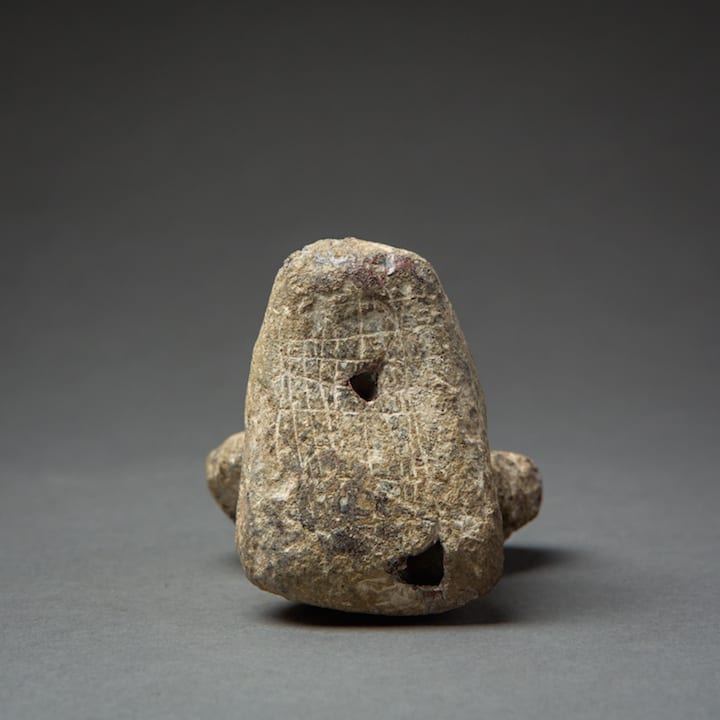Bactria-Margiana Figure, 3000 BCE - 2000 BCE
Lead
9 x 5 x 5 cm
3 1/2 x 2 x 2 in
3 1/2 x 2 x 2 in
LO.1337
Further images
This sculpture of a simplified human figure is seated with its legs protruding outwards. Displayed with rounded features, this figure is whole, yet also clearly divided into two distinct sections;...
This sculpture of a simplified human figure is seated with its legs protruding outwards. Displayed with rounded features, this figure is whole, yet also clearly divided into two distinct sections; the upper torso, shoulders and head, and the lower body comprising the legs. The female head is detailed with carved ears, curly hair, and simplified facial features, sitting atop broad, rounded shoulders. The missing hands would most likely have been made separately and attached to the end of the arms.
This piece pertains to an ancient culture referred to both as the Bactria-Margiana Archaeological Complex (BCAM) or as the Oxus Civilisation. The Bactria-Margiana culture spread across an area encompassing the modern nations of Turkmenistan, Tajikistan, Uzbekistan and Northern Afghanistan. Flourishing between 2100 and 1700 BC, it was contemporary with the European Bronze Age and characterised by monumental architecture, social complexity and extremely distinctive cultural artefacts. Bactria was a powerful economic and social centre due to the exceptional fertility and wealth of its agricultural lands. Pictographs on seals indicate an independently-developed writing system. These factors gave rise to a complex and multifaceted set of societies with specialist craftsmen who produced luxury materials for the ruling and aristocratic elites. Bactrian artefacts appear all over the Persian Gulf as well as in the Iranian Plateau and the Indus Valley, suggesting vast trade networks. For this reason, the area was fought over from early history until the present day, including the armies of Asia Minor, Greece (Macedonia), India and the Arab States, and the United States, amongst others.
This piece pertains to an ancient culture referred to both as the Bactria-Margiana Archaeological Complex (BCAM) or as the Oxus Civilisation. The Bactria-Margiana culture spread across an area encompassing the modern nations of Turkmenistan, Tajikistan, Uzbekistan and Northern Afghanistan. Flourishing between 2100 and 1700 BC, it was contemporary with the European Bronze Age and characterised by monumental architecture, social complexity and extremely distinctive cultural artefacts. Bactria was a powerful economic and social centre due to the exceptional fertility and wealth of its agricultural lands. Pictographs on seals indicate an independently-developed writing system. These factors gave rise to a complex and multifaceted set of societies with specialist craftsmen who produced luxury materials for the ruling and aristocratic elites. Bactrian artefacts appear all over the Persian Gulf as well as in the Iranian Plateau and the Indus Valley, suggesting vast trade networks. For this reason, the area was fought over from early history until the present day, including the armies of Asia Minor, Greece (Macedonia), India and the Arab States, and the United States, amongst others.









